EIB’s Blockchain Challenge asks programmers to reinvent finance
Hoodies, jeans, comfortable sneakers, scruffy chins, a laptop in one hand, a tablet in the other.
Not exactly business wear. One doesn’t expect this attire to be mixing with bankers in blue suits and tightly wound ties. But this is exactly what happened in Luxembourg last week.
For 48 hours, the European Investment Bank’s headquarters became home to a codefest - 56 coders from all over the world worked, ate and slept in the same building with a goal of improving financial transactions using blockchain technology. The EIB called the event the Blockchain Challenge.
Hacking a real-life problem
During codefests like this one, also known as hackathons, teams of programmers, software developers, project managers and other parties compete to find a software solution to a real-life problem.
“The challenge before us is to simplify treasury processes which currently involve a lot of manual interventions,” said Matevž Nolimal, who works in the EIB’s finance department and was the leader of the Bank’s blockchain team. “The blockchain technology has the potential to speed up, automate, and replace not only the cubersome procedures but also the intermediaries with a code.”
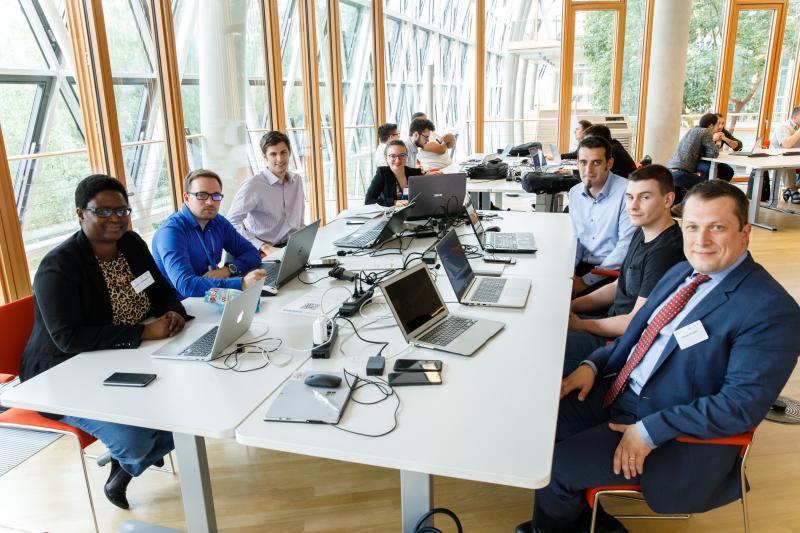
The Bank was represented at the challenge with its own team
So what is a blockchain? It’s a digitalised network of data divided into blocks to record a transaction. It can help two or more parties make a transaction efficiently and securely. It is an open system, which means all parties involved can view the information related to the transaction at any time. Blockchain makes it possible for people or institutions to perform financial transactions without third parties, such as banks or other intermediaries.
“The challenge is about modernising finance,” said Frank Roessig of Telindus, a Luxembourg company developing digital solutions for the financial industry. Roessig helped organise the Blockchain Challenge with the EIB and two other groups: Nyuko, a Luxembourg group that supports entrepreneurs, and the Luxembourg Open Innovation Club, an organisation that helps innovative start-ups.
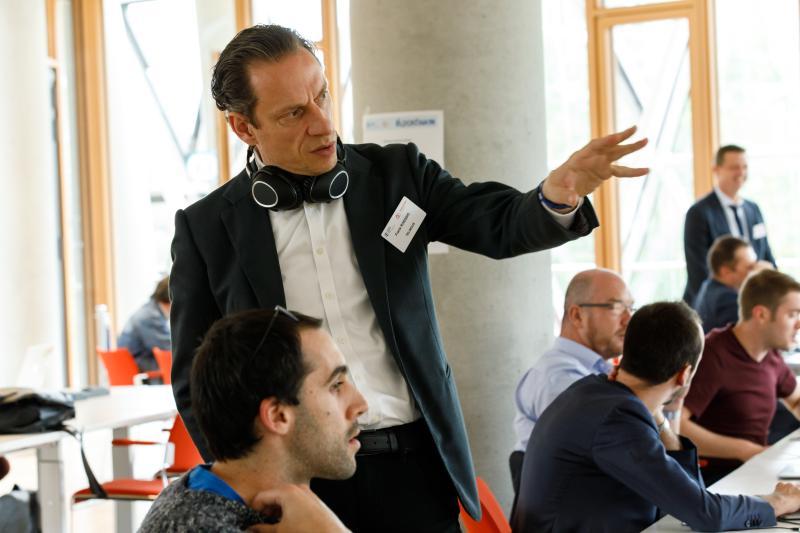
“The challenge is about modernising finance,” said Frank Roessig of Telindus, a Luxembourg company developing digital solutions for the financial industry
“The EIB needs a lot of short-term funding to operate. We hope to explore whether with blockchain we can do this faster, cheaper and more efficiently,” Roessig said.
Blockchain was first used in 2009 as the core of the Bitcoin cryptocurrency, but it is constantly evolving to be used in other secure applications. “This is a new technology and to explore it, you have to actually test it,” Roessig said. “That’s what the EIB is doing right - getting the best coders in the world and putting them together to see what they produce.”
Coders and bankers
Francisco Castro, the head of the EIB’s back-office treasury division, announced the start of the challenge on Wednesday, and the coders immediately threw themselves into the work.
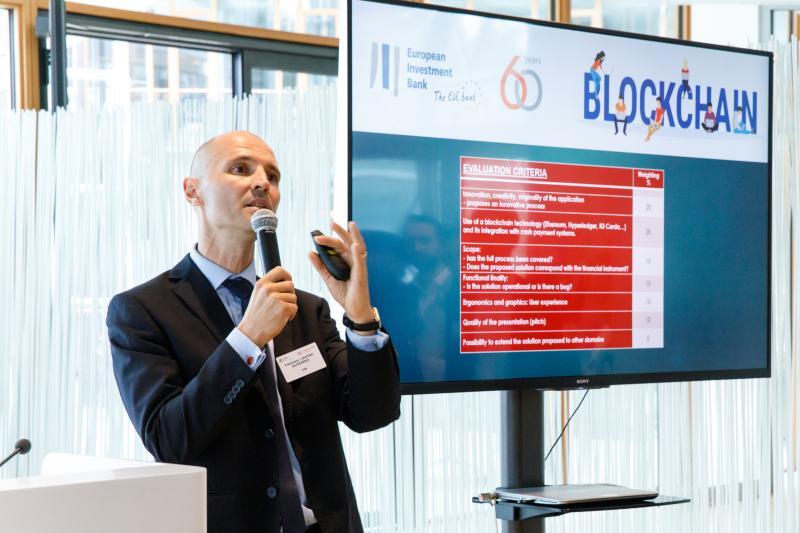
Francisco Castro, the head of the EIB’s back-office treasury division, during the opening introduction
“This is just the second time I’m participating in an event like this, but I love it,” said Alicia English, a data scientist in Rome at the Food and Agriculture Organization of the United Nations. “I think it’s an advantage to have the experts working alongside us advising us on the problem. That’s a difference compared to similar events I’ve seen.”
The Blockchain Challenge took place during an annual forum that the EIB’s treasury department organises with the banking sector. This gave coders at the challenge the chance to mix with financial technology experts and the EIB’s banking partners and get answers on the spot.
“I see us coders as doctors having the patients, the bankers, next to us and telling us where the pain is so we can help them,” said Miguel Diaz Montiel, a coder from Mexico.
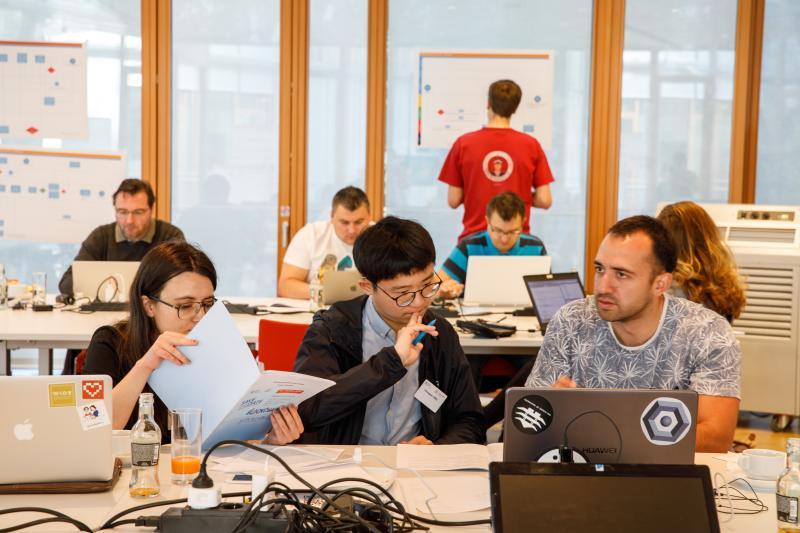
Miguel Diaz Montiel (right) and his team during the EIB’s Blockchain Challenge
Montiel came to the challenge alone, but soon formed a team with other independent coders from China, Luxembourg, France and Spain. “The team came together quite spontaneously, but we are really happy to work together,” he said. Their cosmopolitan team was one of 10 groups participating, while two coders decided to compete individually.
Three days, two nights
The stakes were high. Some of the coders stayed in the building throughout the competition, taking short naps in their sleeping bags or on EIB couches to save time. The Bank supplied juice and pastries in the morning and big bowls of Snickers, Twix and Bounty chocolate bars all day to keep the players wide awake.
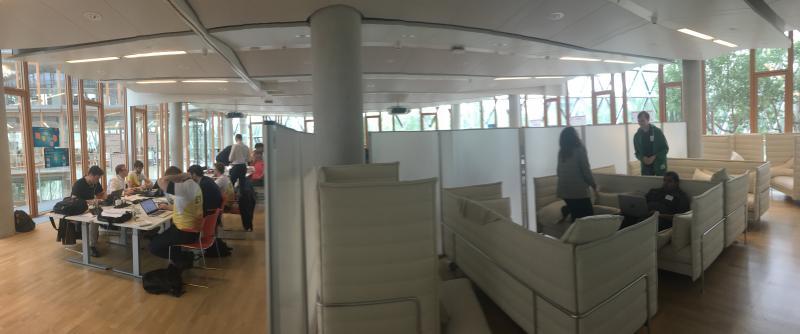
The 48 hours ticked by quickly and soon it was time for the challengers to pitch their solutions to a jury. Many of the proposals were interesting, but the jury singled out four top teams and then said the clear favourite was the Ernst and Young group, whose bright-yellow “EY” T-shirts made sure everyone knew who was taking home the top prize.
“I expected the win because we worked really hard,” said Angel Pavlov, EY’s senior manager. “We implemented both blockchain and robotics in our solution and I think everybody saw a possibility for it to actually work.”
So what was the solution exactly?
“The EY team presented the idea on how to apply blockchain technology and robotics on the internal process within the existing framework,” said the EIB’s Nolimal. “Their idea is to keep everyone on board - our counterparts, paying agents, central security depositories - but focus on the optimisation of the internal procedures.”
Though admitting that they expected to win, the EY team still seemed surprised, which might have had to do with the check for EUR 5 000 they were handed and the possibility of a 6-month Bank contract to develop their solution. “We are going to celebrate first, but I am aware that the real work starts now!” Pavlov said.
